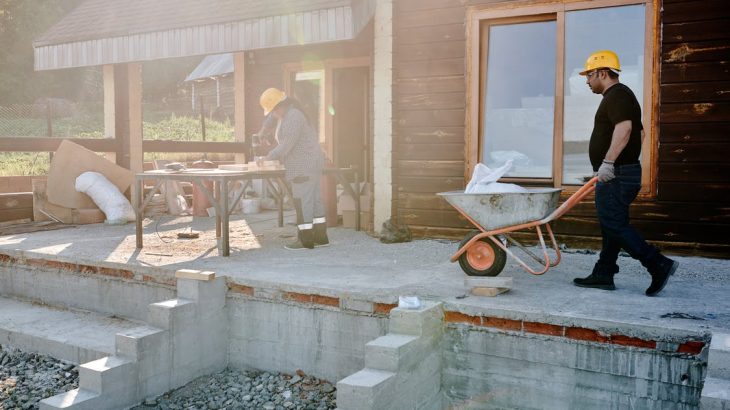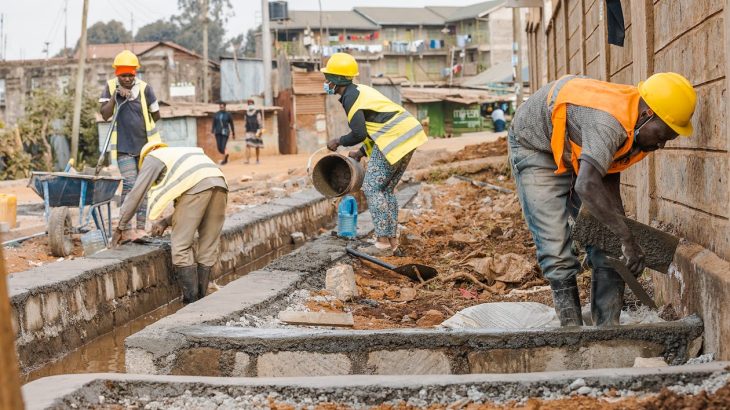Earthwork and foundation construction form the bedrock of any building project, setting the stage for a structure’s durability and stability. For building professionals, understanding the nuances of these techniques is crucial. This article delves into various earthwork and foundation methods, offering insights that are essential for architects, engineers, and contractors.
The Importance of Earthwork in Construction
Earthwork is the first step in the construction process, involving the removal, movement, or addition of soil to create a level base for building. This stage is critical as it prepares the ground for the foundation, ensuring that it can support the structure’s weight and withstand environmental factors.
Soil Testing: The First Step
Before any earthwork begins, soil testing is essential. It determines soil type, bearing capacity, and the presence of water tables. Different soils — clay, silt, sand, or gravel — react differently under pressure and have varying capacities to hold water. Understanding these characteristics informs the choice of foundation and earthwork strategy.
Excavation and Grading: Laying the Groundwork
Excavation involves removing soil to reach the desired depth for the foundation. It can also include digging trenches for utilities. Grading follows, which is the process of leveling the excavated surface. Proper grading ensures water drainage away from the foundation, a critical factor in preventing water damage and foundation issues.
Foundation Techniques: Choosing the Right Approach
The foundation is the part of a building that transfers its loads to the ground. Choosing the right foundation technique is crucial for the longevity and safety of the structure.
Shallow Foundations: When to Use Them
Shallow foundations, also known as spread footings, are used when the soil has a high bearing capacity and the load from the building is relatively light. These foundations spread the load over a large area at a shallow depth, typically less than three feet below the surface.
Deep Foundations: For Heavier Loads and Weak Soils
When the soil has a low bearing capacity or the building load is heavy, deep foundations are necessary. These include pile foundations, where long, slender columns are driven deep into the ground to reach stronger soil layers. Another type is caissons or drilled shafts, which involve creating a hole and filling it with concrete. These methods transfer building loads deeper into the ground, bypassing weaker surface layers.
Modern Earthwork and Foundation Innovations
Advancements in technology and materials have led to innovative earthwork and foundation techniques that offer improved efficiency and sustainability.
Geosynthetics: Revolutionizing Soil Stabilization
The use of geosynthetics in earthwork has been a game-changer. Materials like geotextiles, geomembranes, and geogrids reinforce soil, improve drainage, and prevent erosion. They are particularly useful in areas with weak or unstable soil.
Eco-Friendly Foundations: Sustainable Building
Sustainability in construction is increasingly important. Techniques like rammed earth foundations, where natural materials like earth, chalk, lime, or gravel are compacted to create a sturdy base, are gaining popularity. These methods are not only environmentally friendly but also offer excellent thermal mass, reducing heating and cooling costs.
Staying Ahead in a Changing Industry
The construction industry is evolving rapidly, with new materials and methods emerging regularly. For building professionals, staying informed about these developments is crucial. Continuous learning through workshops, seminars, and industry publications is essential to keep up with the latest trends and technologies in earthwork and foundation techniques.
Embracing Innovation for Future Success
As we look toward
s the future, the emphasis on sustainable building practices and the integration of technology in construction processes will only grow. Professionals who embrace these changes and adapt their skills accordingly will lead the industry, ensuring the creation of safe, durable, and sustainable structures.
Building on Solid Ground: A Foundation for Success
In conclusion, earthwork and foundation techniques are fundamental aspects of construction that require careful consideration and expertise. From initial soil testing and grading to choosing the appropriate foundation method, each step is critical to the overall success and longevity of a building project. As the industry evolves, embracing innovation and sustainability will be key for building professionals aiming to excel in their field. By understanding and applying these essential insights, they can ensure that their projects are not only structurally sound but also environmentally responsible.



















